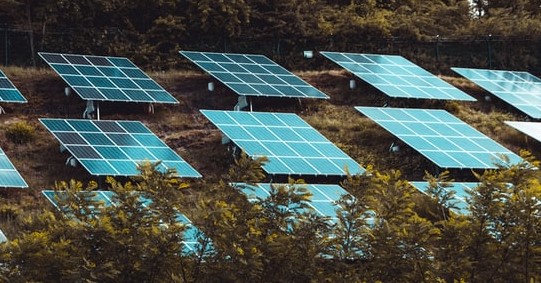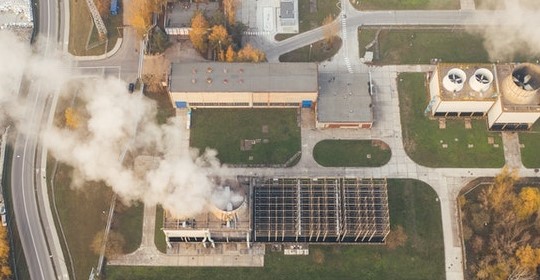FAQ
What is a carbon credit?
One carbon credit corresponds to one ton of verified GHG reductions.
Why choose Will Solutions' Sustainable Community carbon credits?
A Sustainable Community carbon credit is a duly verified GHG reduction; Sustainable Community carbon credits have been designed to reduce GHG emissions in an immediate, rapid and large-scale manner. This is one of the priority actions identified by the IPCC in its August 9, 2021 press release.
The creation of Sustainable Community carbon credits follows a rigorous process, which has been verified under a group project (the Sustainable Community macro-project) validated by Verra. WILL is the pioneer of this innovative methodology.
Our carbon credits stimulate and finance the local economy, and enable the participation of SMEs, municipalities and other organizations from the same region. This allows these organizations to take action thanks to the monetary return from their ecological projects.
How does my purchase of carbon credits help reduce emissions?
Your purchase directly supports the real and guaranteed (because already achieved) GHG reduction efforts of small businesses and organizations in your community, as well as supporting future climate projects by these same local organizations. In this way, you offset your emissions via high-quality community carbon projects, while accelerating the multi-sectoral green transition of small and medium-sized local economic players.
How are GHG reductions measured by WILL?
All GHG reductions, qualified under the Sustainable Community methodology, are calculated on the basis of supporting documents that have been requested of all members following an on-site or remote audit.
What is the creation process (life cycle) of a carbon credit?
Each eligible GHG reduction micro-project in the Sustainable Community is first qualified following the completion of a carbon footprint, then the resulting GHG reductions are quantified (calculated according to the supporting documents submitted), aggregated with the other micro-projects in the Community, and verified in a cohort (over a full calendar year) by a certified third party.
The verification report is filed and validated by the VCS program, then each verified GHG reduction is serialized and recorded in a registry and marketed.
What is VCS?
The Verified Carbon Standard (VCS) Program is the primary program for carbon credit projects that are recognized in the voluntary carbon markets. It provides third-party assurance that the carbon credits are fully verifiable and auditable. It is managed by the Verra.
Facts and data: https://verra.org/datainsights/data-and-insights-april-2021/
Why did WILL choose Verra's VCS?
Verra is recognized as the world’s leading greenhouse gas crediting program. It has high standards and provides assurances to those purchasing carbon credits that the carbon credits are verifiable. Also, the VCS program is open to methodological innovation, i.e. in open-source collaborative mode. WILL developed and certified a methodology, VM0018 (2009-2012), which is the methodological basis of the Sustainable Community macro-project.
Since 2020, WILL has been working on amending this methodology to include GHG reductions related to transportation, still using the building as the calculation perimeter.
All our project validation documents are available here, including the MRV (Monitoring, Reporting and Verification) phases.
How is buying local considered?
Buying local is growing in demand from corporate buyers and consumers who want to support the climate efforts of local projects, operations and living environments, hence the name and the purpose of the Sustainable Community.
What is the role of Will Solutions on the voluntary carbon market?
The complexity of the subject and the costs of monetization, i.e. the entire life cycle of a carbon credit; from its qualification to its sale remains extremely tedious and economically unaffordable for small reduction projects.
Once a GHG reduction micro-project has been qualified (via the completion of a carbon footprint), Will’s business model allows each organization to participate without further outlay, since WILL assumes all the costs and risks of monetization, and ensures an annual monetary return to its members who reduce their emissions.
How many years does a carbon project of a member is valid through Sustainable Community?
10 years. WILL has renewed its Sustainable Community for Quebec project for a second period running from 2020-2029. Each micro-project that remains active, supported by documentary evidence, can be quantified on an annual basis until December 31, 2029.
In addition, a renewal of the Sustainable Community project is planned for the period 2030-2039 with Verra.
Reference: https://solutionswill.com/en/renewal-of-the-sustainable-community-project-confirmed-by-vcs/
How can I calculate my carbon footprint?
Although GHG emissions are invisible, it is possible to calculate your carbon footprint fairly accurately. Indeed, several companies and organizations offer online calculators that allow you to determine the GHG emissions related to travel, energy consumption, food, waste, etc.
Although GHG emissions are invisible, it is possible to calculate your carbon footprint fairly accurately.
For companies, Will Solutions offers to measure your annual emissions via certified calculation methods, on scopes 1, 2 and 3. Among the sources of emissions calculated are production, energy, residual materials and transport.
For individuals, there are several companies and organizations offering online calculators to determine individual GHG emissions. Estimate your annual emissions here.
What is the IPCC?
The Intergovernmental Panel on Climate Change (IPCC) is an intergovernmental body open to all member countries of the United Nations (UN). It produces periodic scientific publications for policymakers on climate change. It currently has 195 member states.
I've heard of the Western Climate Initiative (WCI), what is it?
The WCI is a regulated market for GHG emission rights. It is a market whose supply (emission rights) and demand (participation obligation for emitters of more than 25,000 tons of GHG/year and fossil energy distributors since 2015) are governed by each of the two governments of Quebec and California. In Quebec, the regulatory terms and conditions are governed under the SPEDE. Quebec and California joined in 2014 and have been holding auctions for the sale of emission rights 4 times a year since.
Is WILL Solutions part of WCI?
No. The Sustainable Community project is exclusively dedicated to voluntary carbon markets (VCM). The GHG reduction micro-projects qualified in Sustainable Community and the buyers of these do so voluntarily without any obligation or regulatory constraint.
FAQ EXTRA
CLIMATE ACTION
Involves taking note, acting consequently, and implementing policies that are respectful of the environment. It was stated in the preamble of the Paris Agreement of December 2015 and requires the participation of all actors in society.
Governmental Actions
Several instruments can be used along with government climate actions, including carbon pricing. These include carbon taxes on GHG emissions, regulated market mechanisms, specific regulations such as those prohibiting the sale of new fossil fuel vehicles and « results-based climate finance (RBCF) ».
L’ACTION VOLONTAIRE (beyond any regulations)
Derives from the fact that companies or developers can develop projects that emit less GHGs or reduce GHGs in the atmosphere beyond their regulatory obligations and that any company can participate in voluntary carbon markets (VCM), either individually or as part of a sectoral program.
These markets are accessible to all actors in the economy. The main players in the voluntary markets are[1]: project promoters or developers, end buyers of carbon credits, secondary market actors (brokers, resellers) and programs.
CARBON CREDITS
To be credible, validated and recognized, carbon credits must meet certain principles, including being real, permanent, measurable, verifiable, and additional. Carbon credits are approved if, among other things, they come from a project that actually produces fewer GHG emissions in the current alternative than in the previous scenario in a quantifiable and repeatable manner over the years.
THE PROJECTS THAT SUPPORT THE PRODUCTION OF CARBON CREDITS
The projects can be very diverse and of different types. They fall into three major categories, namely:

1. Reduction at source projects
Reduction at source projects include energy efficiency, construction of new energy efficient buildings, methane avoidance through energy recovery of waste, etc.
Avoidance projects such as energy conversion projects, including replacement of fossil fuels with renewable energy (hydro, wind, solar, and geothermal), waste diverted from landfill, behavioral changes in transportation, etc.


2. CO2 sequestration projects
CO2 sequestration projects, including nature based solution (NBS), are climate change solutions based on nature that sequester CO2. They include reforestation, forest protection and land management, as well as sustainable agriculture.


3. Capture engineering projects
Engineering projects that aim to capture CO2.
THE FUTURE OF VOLUNTARY CARBON CREDITS
Reviews and experts in the field of climate change believe that as demand for carbon credits increases, the emergence of voluntary markets will be driven. A careful analysis of the future demand and supply of voluntary carbon credits by Trove Research et University College London shows that demand for carbon credits is likely to increase significantly as more and more companies and multinationals commit to «Net Zero», by 5-10% over the next ten years, 8-20% by 2040 and 10-30% by 2050.
This increase in demand will raise the share of voluntary carbon credits to 5% of total GHG emissions. The voluntary emissions offset market includes a wide range of programs, entities, standards, and protocols, notably the Clean Development Mechanism (CDM), the Verified Carbon Standard program (VCS), the Gold Standard program (GS), the American Carbon Registry (ACR) the Climate Action Reserve (CAR).
the choice of carbon credits
The choice can depend on several parameters, including the buyer’s values. Thus, community projects are often highly appreciated, as they bring added value to the development of a community and encourage it in its sustainable development process. Furthermore, local purchasing is becoming more and more widespread. In this case, one could, for example, consider local purchase first, then look at combos (local-international, reduction-sequestration).
As for the price of carbon credits, it is one of the main information sought by buyers. Setting it is far from being simple, due to the wide variety of carbon credits on the market, the nature of the projects being diverse. The price of carbon credits is an index that enables market players to ensure that they are trading their credits at a price close to the social cost of GHG emissions. This price is highly variable. However, there are several reasons why these prices vary.
Some criteria for differentiation as a basis for a fair price: The project location (constraining environmental regulations differ across more than 2,000 territories around the world); the cost of implementing the project; the social value that projects bring to the community beyond carbon reduction or removal; prevailing carbon price regulation and the law of supply and demand; the rigor of project implementation (project carried out according to a protocol certified by internationally recognized programs and supported by registries); the nature of the projects (reduction project, sequestration project, or capture engineering project); the social and environmental impacts of the projects; the projects directly related to the SDGs; the financial spin-offs of the project for its community, e.g., returning as much money as possible to the project holder; favoring community group projects that stimulate the participation of millions of smaller projects.
THE PRICE: FOLLOWING THE MONEY
The social cost of carbon[1] is defined as the future harm of emitting of a ton of CO2 into current monetary value.
This cost takes into account several parameters including climate risks and future generations. In addition, it helps policy makers to determine climate policy. Therefore, the social cost of carbon must increase to effectively account for the harms reflected, especially as physical and economic systems will undergo new stresses over time with the multiplication of climate change effects.
Conclusion
The result is real, permanent, measurable and verifiable GHG reduction projects, stimulating emerging change practices (behaviours, business models and clean technologies) and therefore additional to the profit of the greatest number (SMEs, municipalities and consumers)!
